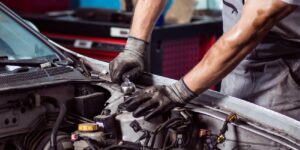Owning a car comes with many responsibilities, and one of the biggest expenses is vehicle maintenance. While regular service from a certified mechanic is essential for complex issues, there are plenty of do-it-yourself (DIY) car repairs that can help you save money, avoid unnecessary service charges, and even help you understand your vehicle better. Whether you’re a beginner or just looking to cut down on repair costs, these practical tips can keep your car in top shape and your wallet full.
Why DIY Car Repair Matters
With the average mechanic’s hourly labor rate ranging from \$80 to \$150, even small jobs can quickly add up. Performing simple maintenance tasks at home not only saves money but also gives you a greater sense of control over your vehicle’s condition.
“An ounce of prevention is worth a pound of cure.” — Benjamin Franklin
This famous quote holds true in car care. Performing regular DIY maintenance can prevent more serious—and expensive—repairs down the road.
Basic Tools You’ll Need
Before you begin, having the right tools is essential. You don’t need a full professional setup, but a few key items will make your DIY repairs easier and safer.
| Tool | Purpose | Recommended For |
|---|---|---|
| Socket Wrench Set | Loosening/tightening bolts | Oil changes, brake jobs |
| Jack & Jack Stands | Lifting car safely off the ground | Tire rotations, undercarriage work |
| Screwdrivers | Removing panels or small parts | Battery replacement, filters |
| Tire Pressure Gauge | Check and adjust tire pressure | Monthly maintenance |
| OBD-II Scanner | Diagnose check engine light | Engine trouble codes |
1. Change Your Oil and Oil Filter
Changing your own oil is one of the easiest and most cost-effective car maintenance tasks. While shops may charge \$50–\$100 or more, doing it yourself can cost under \$30.
Steps:
- Drain old oil from the oil pan.
- Replace the oil filter.
- Add new oil based on your car’s specifications.
📌 Tip: Always dispose of used oil at a recycling facility.
2. Replace Air Filters
A clean air filter improves engine performance and fuel economy. Most vehicles have two filters: the engine air filter and the cabin air filter. Replacing them takes less than 10 minutes and costs under \$20 per filter.
How Often? Every 12,000 to 15,000 miles or once a year.
DIY Benefit: Shops often charge \$30–\$60 for this simple task.

3. Change Your Windshield Wipers
Wipers are inexpensive and take just a few minutes to replace. Poor visibility due to worn-out blades can be dangerous, so it’s important to keep them in good shape.
Signs They Need Replacing:
- Streaks on the windshield
- Squeaky or chattering noise
- Skipping areas during use
DIY Cost: \$10–\$25
Mechanic’s Price: \$40–\$60
4. Check and Replace Spark Plugs
Spark plugs ignite the fuel in your engine. Over time, they can wear out and reduce performance. Replacing them is a straightforward process for most vehicles.
Tools Needed: Spark plug socket, ratchet wrench
Time: 30–60 minutes
Savings: Around \$100 compared to shop prices
5. Inspect and Replace Brake Pads
Brake pads are critical to vehicle safety. If you hear squeaking, grinding, or feel vibration when braking, your pads might need replacing.
DIY Difficulty: Intermediate
Tools: Jack stands, lug wrench, socket set
DIY Savings: \$150–\$300 per axle
Always consult your vehicle’s manual and use high-quality parts. If unsure, ask a professional to inspect your brakes.
6. Flush and Refill Coolant
Coolant (or antifreeze) regulates your engine’s temperature and prevents it from overheating. A coolant flush every 30,000–50,000 miles can extend engine life.
Steps:
- Drain old coolant from radiator
- Refill with a 50/50 mix of coolant and water
- Bleed air from the system (follow manufacturer guide)
Cost at Home:\$20–\$30
Shop Cost: \$100–\$150
7. Rotate Your Tires
Tire rotation helps ensure even wear and extends the life of your tires. It should be done every 5,000–8,000 miles.
DIY Tools: Jack and jack stands
Pattern: Most cars follow a front-to-back, cross-rotation pattern
DIY Savings: \$20–\$50 each time
8. Check and Maintain Tire Pressure
Under- or over-inflated tires reduce fuel efficiency and increase wear. Use a digital or manual pressure gauge to check your tire pressure monthly.

Steps:
Find the recommended PSI (usually in the driver’s door frame)
Use a gauge to check current pressure
Inflate or deflate as needed
Keeping tires at optimal pressure can improve gas mileage by up to 3%.
9. Battery Maintenance and Replacement
If your car struggles to start, it may be time to clean the terminals or replace the battery.
DIY Maintenance:
- Use baking soda and water to clean corrosion
- Tighten terminal clamps
- Test battery with a voltmeter
Battery Replacement Cost: \$80–\$150 DIY
Mechanic Price: Up to \$250
10. Use an OBD-II Scanner
An OBD-II scanner plugs into your car’s diagnostic port (usually under the dashboard) and reads trouble codes. This helps identify the issue behind a check engine light without a costly shop visit.
Cost: Basic scanners start at \$20
Use: Scan codes, research them online, and decide if you can fix it yourself or need a pro
Final Thoughts: Know When to Call a Professional
While DIY repairs can save you hundreds of dollars, it’s important to know your limits. Jobs like transmission repair, engine overhauls, and electrical wiring should be handled by certified mechanics. But for routine maintenance and minor fixes, investing time in DIY car repair can build your skills, confidence, and savings.
✅ Key Takeaways:
- Start small and use your car manual for guidance.
- Invest in basic tools; they’ll pay for themselves quickly.
- YouTube and car forums can be great resources.
- Always prioritize **safety**—don’t work under an unsupported car.
Read More: Car Oil Changes





